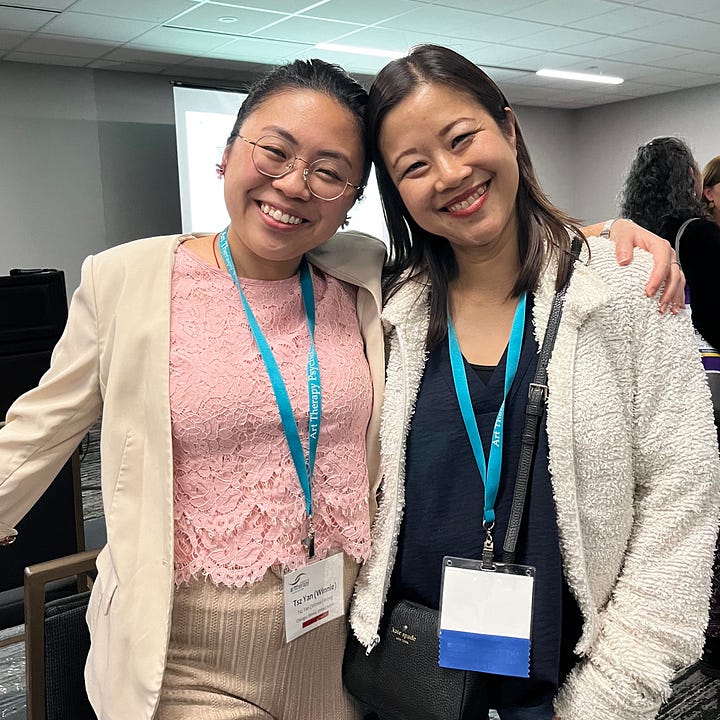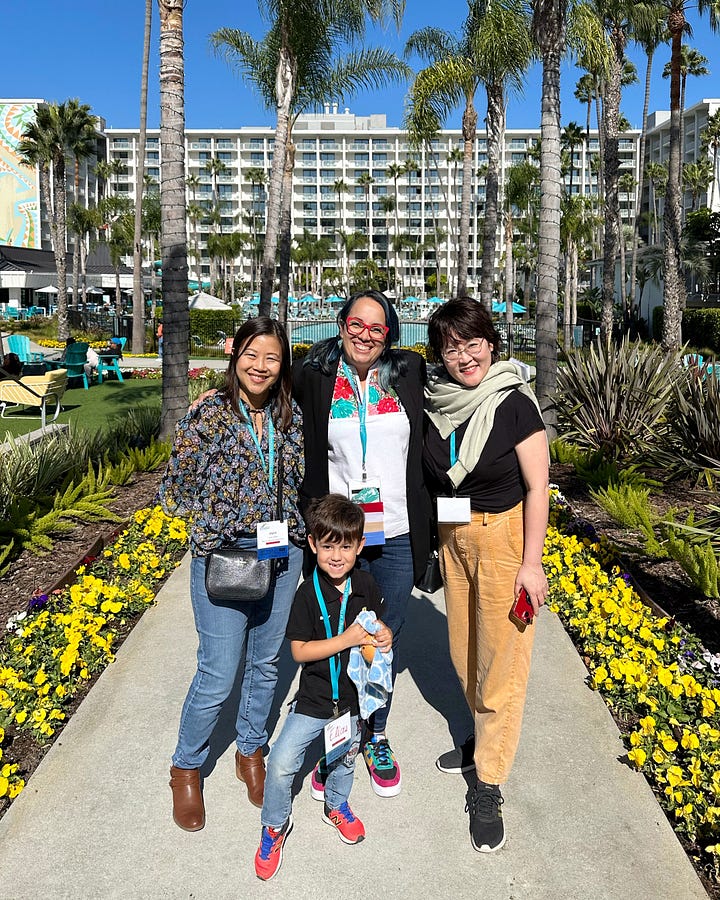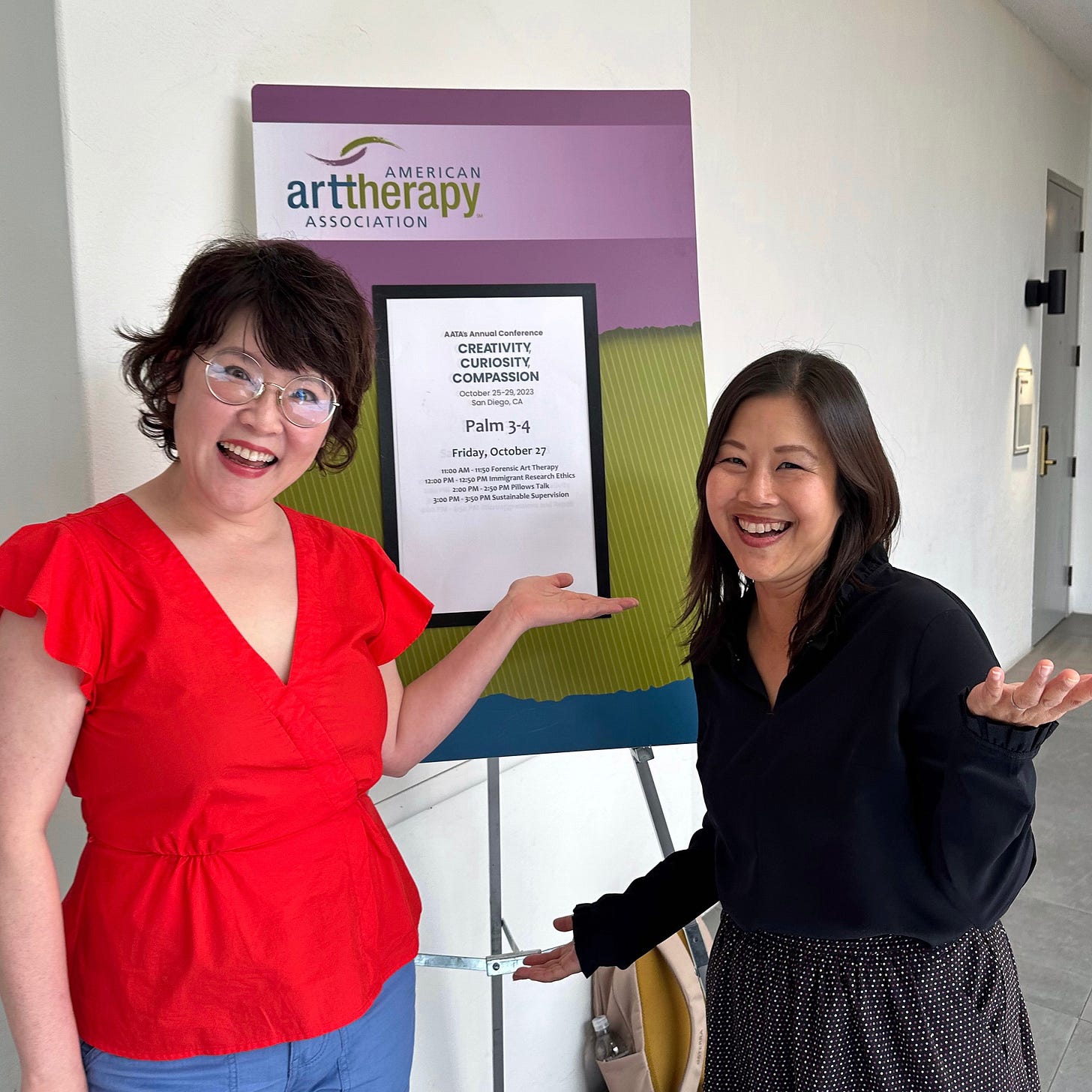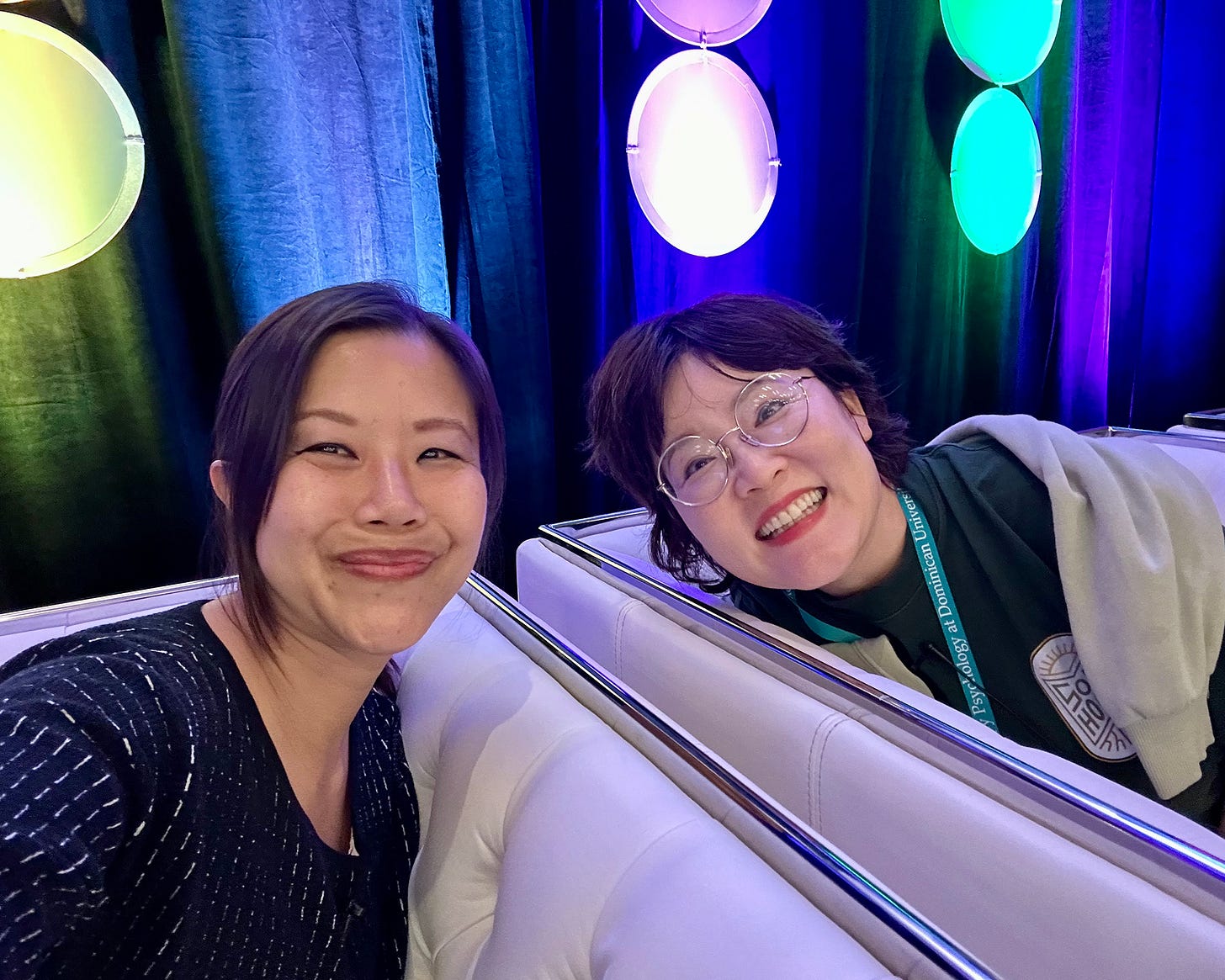Liminality
Joyce reflects on the very human experience of in-between-ness and recaps the Professor and the Artist's time at the 2023 AATA Conference
"A liminal space is an intermediate phase, a transitional territory, between past and future, in the purest present moment, it stands as a threshold, and is neither this, nor that, because anything is possible in that in-between. This space is ephemeral and is barely perceptible, it is but sometimes a fleeting moment. For the art therapist to enter the liminal space with the client, he or she has to accept being in a waiting state, not knowing if it will present itself. To be invited in that space, we need to recognize it is a time to be open, humble, and deeply vulnerable.”
— Mach, S. (2021, pp. 27). The Meeting of Two Minds in the Intermediate State: The Art Therapist as a Guide in the In-Between, Immersed and Assisted by Contemplative and Transpersonal Theory
The above definition of Liminality in Samantha Mach’s thesis paper describes the space between client and therapist during the therapeutic process. It’s in that space where the revelation and discovery of self-in-transition occur. In research as well as in the therapeutic process, capturing the liminal, in-between moments of discovery from the unknown to the known is such a sacred place. For Helen and I, it’s not just about observing and notating what participants tell us during an interview. It’s about opening up a space of curiosity, safety, and holding… holding the sacred stories and experiences of the human who sits before us.
We recently presented at the 54th American Art Therapy Association Conference in San Diego, CA. We had the privilege of sharing the progress of our (re)Location work and the lessons on research ethics we learned along the way in community-based research. We were both also invited to join the panel plenary hosted by the association’s Multicultural Committee to discuss our experiences of “the in-between” as immigrants living in Southern California and the ways that we, as multicultural and multi-dimensional artist/art therapist experience liminality. Helen facilitated her brilliant art piece “Our Only Guide Is Our Homesickness II”, inviting all 600+ of us into relational aesthetics with ourselves and each other. It was a sublime experience and so meaningful to hear from participants how they related to one another’s stories and experiences.
All of us are always in transition. Growth is transition. Loss is transition. Helen and I are discovering that liminality related to immigrant/refugee experiences not only involves the realization of that which we are losing but also slowing down to intentionally tolerate the process of shedding loss to make room for new growth. In research or the therapeutic process, we hold time to make room for the discovery and the communication of these complexities.




Beyond researchers, therapists, and artists, we all need to create space for our own experiences of the in-between as well as the experiences of those around us. Here are a few questions to help you reflect on the liminality of the human journey:
Do you embrace or resist the ambiguous in-between?
If there are times you embrace it and times you don’t, what are the distinct factors that make you lean one way or another?
How do you communicate your in-between experiences? Can you think of some helpful ways to put language to your experiences and feelings?
What are the ways that you receive others’ in-between experiences? How can you create a more inviting space for others to share their experiences with you?
There are certainly tools out there that can “teach” us some of these things. However, empathy, compassion, and critical thinking are tools we inherently carry within ourselves and only we can learn how best to utilize them for each of our unique contexts, cultures, and circumstances.
Reference:
Mach, Samantha. The Meeting of Two Minds in the Intermediate State: The Art Therapist as a Guide in the in-between, Immersed and Assisted by Contemplative and Transpersonal Theory, Notre Dame de Namur University, United States — California, 2021. ProQuest






